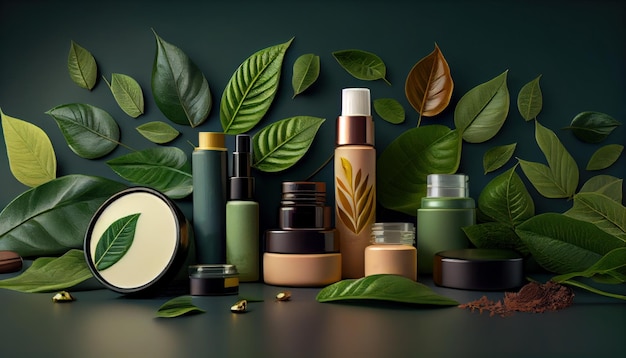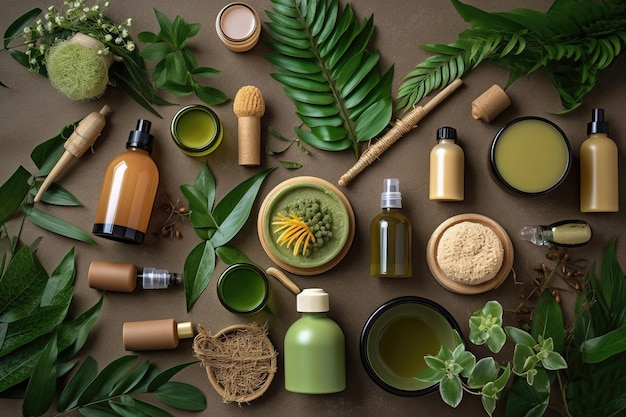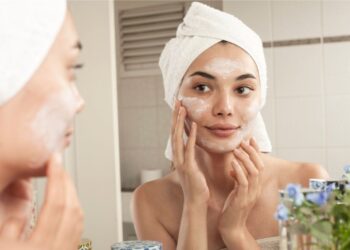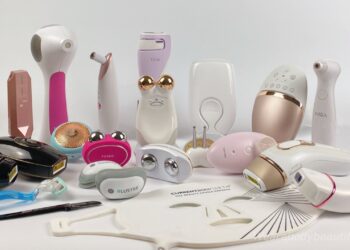In the world of beauty, the focus has long been on what goes inside the bottle. Today, a new and critical conversation is emerging: what happens to the bottle itself? As consumers become more aware of the environmental impact of their purchases, the beauty industry is undergoing a significant transformation. The rise of sustainable packaging is no longer a niche trend; it’s an essential movement reshaping how products are designed, manufactured, and sold. This article explores the innovative solutions driving this change, the challenges brands face, and what it means for the future of cosmetics.
The Problem with Traditional Packaging
The beauty industry is a major contributor to global waste. A significant portion of this waste comes from product packaging—single-use plastics, complex materials, and non-recyclable components that end up in landfills or oceans. The linear model of “take, make, use, and dispose” is no longer sustainable. Consumers are demanding change, and brands are responding with new approaches that prioritize the planet.
Innovative Solutions in Sustainable Packaging

Brands are embracing a variety of creative and practical solutions to reduce their environmental footprint. These innovations are not only better for the planet but also often appeal to modern consumers who value ethical and responsible brands.
A. The Shift to Recycled and Recyclable Materials
The most direct way to combat waste is by using materials that can be given a new life.
- Post-Consumer Recycled (PCR) Plastic: This is plastic made from recycled materials, which reduces the need for virgin plastic production. Many brands are now using PCR for their bottles, jars, and caps. It’s a closed-loop solution that keeps plastic out of landfills.
- Glass: Glass is infinitely recyclable and a premium choice for many brands. It’s stable, non-porous, and doesn’t leach chemicals into the product. However, it is heavier to transport, which can increase carbon emissions.
- Aluminum: Aluminum is also highly recyclable and lightweight. It’s often used for packaging products like solid shampoos, deodorants, and lip balms, offering a durable and elegant alternative.
B. Embracing Refillable and Reusable Systems
Refillable packaging is a game-changer. It shifts the model from single-use to a circular system, where consumers buy a beautiful, durable container once and then purchase eco-friendly refills.
- How it Works: Consumers purchase a product in a reusable container, often made from high-quality glass or metal. When the product runs out, they buy a refill pouch or capsule made with minimal, recyclable materials.
- Examples: Brands like L’Occitane and Kiehl’s have long-standing refill programs. New brands are building their entire business model around this concept, offering refillable foundations, lipsticks, and skincare.
- Benefits: Drastically reduces plastic waste, encourages brand loyalty, and can be more cost-effective for the consumer in the long run.
C. Biodegradable and Compostable Packaging
For materials that cannot be recycled, the next best thing is for them to naturally break down.
- Plant-Based Plastics: Materials derived from corn, sugarcane, or other plant sources are gaining popularity. These bioplastics can often be composted in industrial facilities.
- Mushroom and Seed Paper: Some brands are experimenting with truly innovative materials. Packaging made from mycelium (mushroom roots) can be composted at home, while seed paper packaging contains seeds that can be planted to grow flowers or herbs.
The Challenges of Going Green

While the move towards sustainable packaging is inspiring, it is not without its challenges.
- Cost: Sustainable materials can be more expensive than traditional plastics, which can increase the final price for the consumer.
- Compatibility: Some ingredients in cosmetics can be reactive with certain sustainable materials, making it difficult to find packaging that is both eco-friendly and safe for the product.
- Consumer Education: Brands have a responsibility to educate consumers on how to properly recycle or dispose of their new packaging. The success of a circular economy depends on everyone playing their part.
The Role of the Conscious Consumer
You, as the consumer, have immense power to drive this change. Your purchasing decisions send a clear message to the beauty industry.
A. Look for Certifications
Many brands are certified by organizations that verify their commitment to sustainability. Look for logos from the Forest Stewardship Council (FSC) for paper-based products, or Leaping Bunny for cruelty-free practices.
B. Support Brands with a Mission
Seek out brands that have sustainability as a core part of their mission, not just a marketing gimmick. Read their mission statements and look for details on their sourcing, manufacturing, and packaging practices.
C. Reduce, Reuse, and Recycle
Even with traditional packaging, you can make a difference. Always choose to reduce consumption where possible, reuse containers for other purposes, and properly clean and sort your beauty products for recycling.
The Future of Beauty is Circular
The shift towards sustainable packaging is a vital step in creating a more responsible beauty industry. It’s a movement that challenges the status quo and proves that beauty and environmental stewardship can go hand in hand. By supporting brands that prioritize ethical and eco-friendly packaging, we are not just buying a product; we are investing in a healthier, more beautiful future for all.











